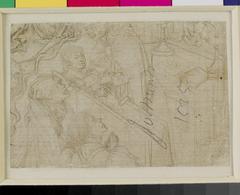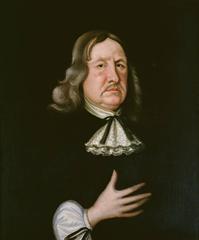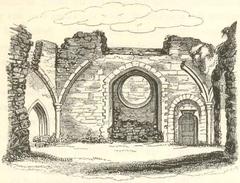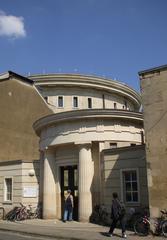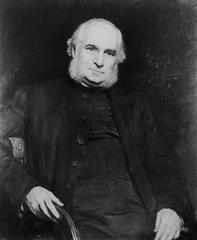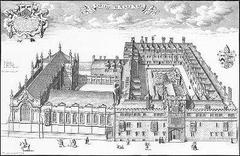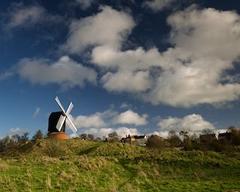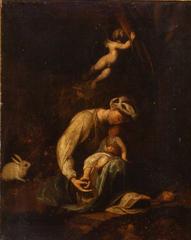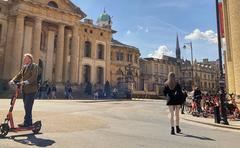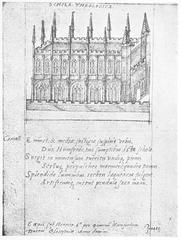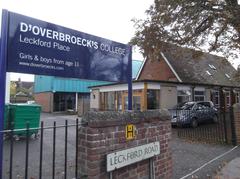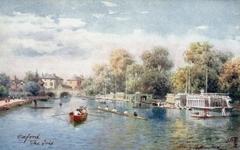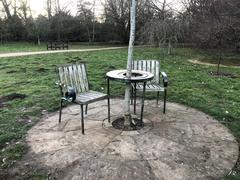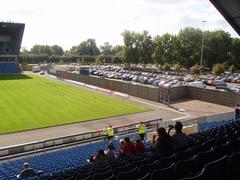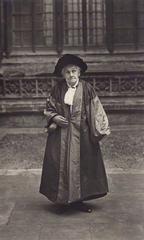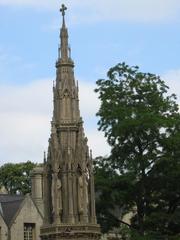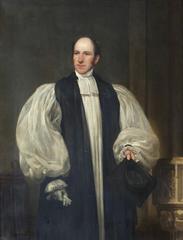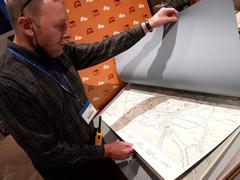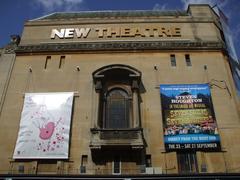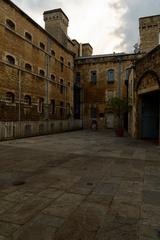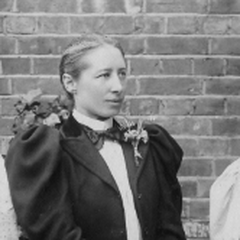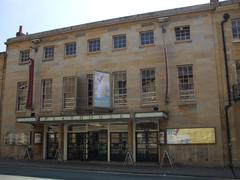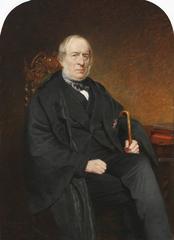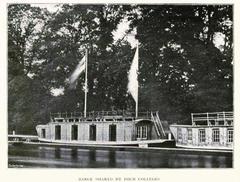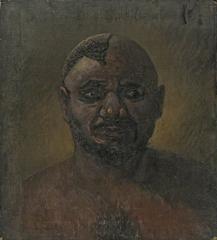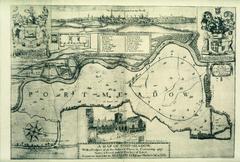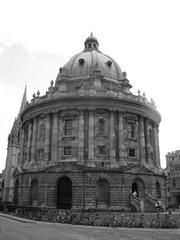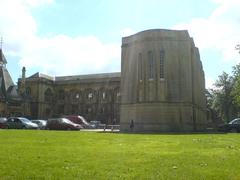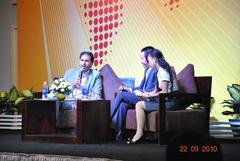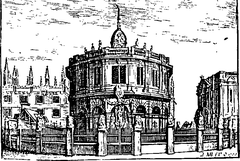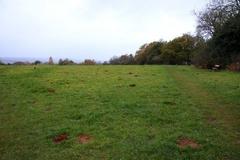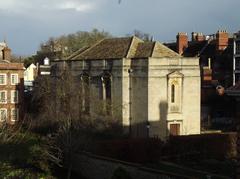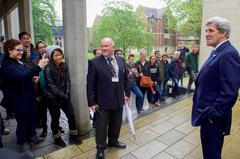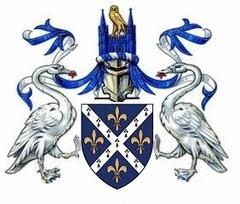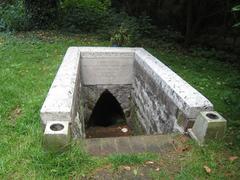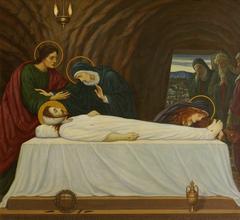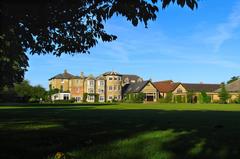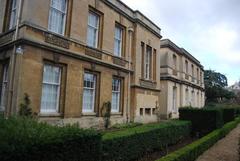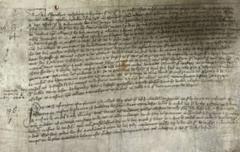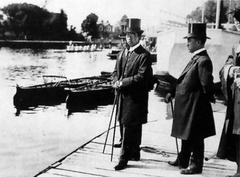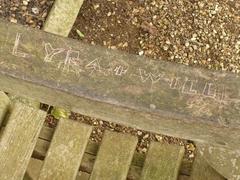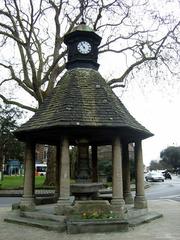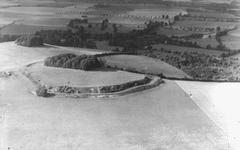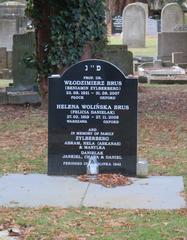Eastwyke Farmhouse Visiting Hours, Tickets, and Travel Guide – Oxford 2025
Date: 14/06/2025
Introduction
Eastwyke Farmhouse, located on the southern outskirts of Oxford, is a rare and evocative example of the region’s rural and architectural legacy. Dating primarily from the 15th to 17th centuries and retaining significant medieval features, this Grade II listed farmhouse provides a tangible link to Oxford’s agricultural roots and the transition from manorial systems to modernity. While now a private residence and integrated into the voco Oxford Spires hotel complex, the farmhouse’s historical and cultural importance continues to attract historians, architecture enthusiasts, and visitors eager to immerse themselves in Oxford’s layered past.
This guide offers a detailed overview of Eastwyke Farmhouse’s history, architectural highlights, visitor information, and practical travel tips, drawing on authoritative sources to ensure accurate, up-to-date insights. Whether you’re planning an external visit, hoping to catch a heritage tour, or looking to explore neighbouring historical sites, this resource will help you make the most of your Oxford experience.
Table of Contents
- Historical Overview
- Architectural Features
- Eastwyke Farmhouse in Oxford’s History
- Visiting Information
- Getting There: Travel and Local Amenities
- Nearby Historical Attractions
- Frequently Asked Questions (FAQ)
- Responsible Tourism and Preservation
- Summary and Planning Tips
- References and Further Reading
Historical Overview
Medieval Origins
Eastwyke Farmhouse traces its origins to the early Middle Ages, a period when Oxford was developing as a fortified burh and religious centre (Oxford History Course). The Old English name “Eastwyke” suggests its role as an “east dairy farm” or settlement supporting the city’s population and, later, the growing university. By the 11th and 12th centuries, estates like Eastwyke were vital in supplying food and resources to local academic and clerical communities.
Architectural Evolution
The farmhouse’s core structure likely dates from the late medieval period, with significant 15th and 16th-century construction phases. Characteristic features include timber framing, limestone rubble walls, steeply pitched clay tile roofing, and stone mullioned windows with leaded lights (Historic England). The farmhouse originally formed part of a self-sufficient agricultural complex, with barns and outbuildings supporting grain cultivation and livestock.
Later Developments
During the 17th and 18th centuries, Eastwyke Farmhouse underwent architectural enhancements reflecting changes in rural life, such as enclosure movements and new agricultural practices. The Dissolution of the Monasteries in the 16th century brought changes in land ownership, and the farmhouse became a private estate (A History of the County of Oxford, vol. 4). Despite urban pressures in the 20th century, the site was preserved due to its historical significance and now stands as a protected heritage asset.
Architectural Features
Exterior:
- Constructed of coursed limestone rubble with a steep clay tile roof.
- Modest principal façade with stone mullioned windows and restored timber frames (Oxford Mail).
- Heavy timber entrance door, tall brick chimney stacks, and gabled rooflines.
- Outbuildings and landscaped grounds reflect the farmhouse’s agricultural past (South Oxford History).
Interior:
- Exposed oak beams, thick stone walls, and flagstone floors.
- Large open fireplaces, irregular room layout, and original staircases.
- Recent renovations converted the farmhouse into boutique hotel rooms while preserving historic features (HLM Architects).
Site and Setting:
- Located on the Thames floodplain, surrounded by open fields with visible medieval ridge and furrow patterns, especially after flooding.
- Grounds landscaped as part of the voco Oxford Spires hotel complex.
Eastwyke Farmhouse in Oxford’s Economic and Social History
Eastwyke Farmhouse played a crucial role in Oxford’s growth, supplying agricultural produce as the university and city expanded. Its proximity to the River Thames and major southern routes facilitated trade, while changing land ownership during the post-medieval period mirrored broader transformations in English rural society.
The farmhouse is also notable for its role during the English Civil War, when it served as a Royalist outpost with documented defensive earthworks (South Oxford History).
Visiting Information
Access and Visiting Hours
- General Access: Eastwyke Farmhouse is a private residence and not open for regular interior tours. However, the exterior can be viewed from public footpaths and Abingdon Road.
- Hotel Stays: Some access to the farmhouse is available to guests of the voco Oxford Spires hotel, where the building has been converted into boutique accommodation.
- Special Events: Occasional heritage open days, guided tours, and cultural events are offered. Check event listings with Experience Oxfordshire and Oxford City Council for up-to-date information.
Tickets and Special Events
- No tickets are required for viewing the exterior.
- Guided tours or special events may require advance booking and may have a fee; details are announced via the hotel or local heritage organizations.
Accessibility
- The grounds and public areas around the farmhouse are accessible by foot, bicycle, and public transport.
- Due to the building’s historic nature, interior accessibility is limited. Contact the hotel in advance for specific accessibility arrangements.
Photography
- Photography is permitted from public vantage points and typically allowed for hotel guests in outdoor areas.
- Please respect privacy and posted guidelines during events or private functions.
Getting There: Travel and Local Amenities
Directions
- By Car: Situated on Abingdon Road (A4144) with limited on-site parking. Alternative parking options include city centre car parks and park-and-ride sites.
- By Public Transport: Oxford railway station is about 2 miles away. Local buses (X3, X13, and others) stop near the farmhouse.
- On Foot/Bicycle: Accessible via the Thames Path and local cycle routes. Bike hire is widely available in Oxford (Oxford City Council).
Local Facilities
- Restrooms: Limited on-site; available at nearby parks and pubs.
- Dining: Numerous pubs, cafés, and restaurants along Abingdon Road and in central Oxford (Lonely Planet).
- Accessibility: Check with the hotel or event organizers regarding specific needs.
Nearby Historical Attractions
- Oxford Castle and Prison: Explore the city’s medieval fortress.
- Bodleian Library: Discover one of Europe’s oldest libraries.
- University of Oxford Colleges: Many colleges are open to visitors.
- Ashmolean Museum: Renowned art and archaeology collections.
- Thames Path: Scenic riverside walks and wildlife spotting.
For more ideas, visit Experience Oxfordshire.
Frequently Asked Questions (FAQ)
Q: Can I tour the inside of Eastwyke Farmhouse?
A: Interior access is reserved for hotel guests or during special heritage events. General public tours are rare.
Q: Are there regular visiting hours?
A: No regular visiting hours; check for scheduled events or hotel accommodation options.
Q: Is the site wheelchair accessible?
A: Some exterior areas are accessible, but the historic building itself has limitations. Inquire in advance.
Q: Can I take photographs?
A: Outdoor photography is permitted from public areas.
Q: What are the best nearby historical sites?
A: Oxford Castle, university colleges, Bodleian Library, and Ashmolean Museum are all close by.
Responsible Tourism and Preservation
- Respect private property and follow local signage.
- Take litter with you and avoid disturbing wildlife.
- Support local heritage organizations through donations or event participation.
- Use public transport, walk, or cycle to minimize environmental impact.
Summary and Planning Tips
Eastwyke Farmhouse stands as a living testament to Oxford’s rural roots, architectural heritage, and centuries of social change. While public access is limited, viewing the farmhouse from public paths or booking a stay at voco Oxford Spires offers a unique connection to the past. For a complete Oxford heritage experience, combine your visit with walking tours, museum visits, and riverside excursions.
Top Tips:
- Check Experience Oxfordshire and Oxford City Council for the latest on open days and events.
- Dress for variable June weather (Weather25).
- Bring a camera for the farmhouse and surrounding countryside.
- Plan travel and parking in advance, especially during busy periods.
References and Further Reading
- Oxford History Course
- British Historic Towns Atlas, vol. 7: Oxford
- A History of the County of Oxford, vol. 4
- Oxford Mail – Eastwyke Farmhouse
- South Oxford History
- HLM Architects – voco Oxford Spires
- Historic England Listing
- Archaeology Data Service
- Experience Oxfordshire
- Oxford City Council – Visit Oxford
- Oxford Walking Tours
- Lonely Planet – Top Things to Do in Oxford
- Weather25 – Oxford June Forecast
Call to Action
For more insights into Oxford’s heritage, download the Audiala app, subscribe to our newsletter, and follow us on social media. Explore related guides and exclusive content to enrich your cultural journey in Oxford.

